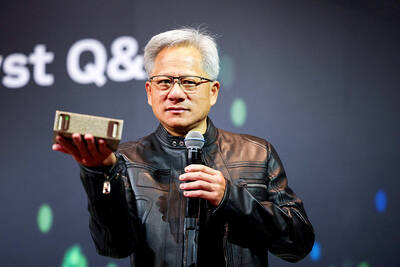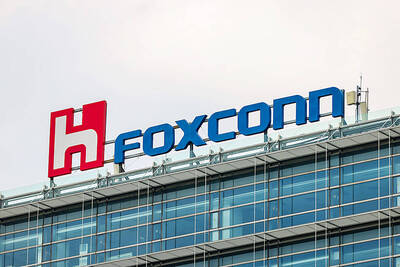A major change is taking place in the way devices communicate with computers, but most users won't even notice it.
By the end of this year, all desktop computers sold will be able to use super-fast universal serial bus (USB) 2.0 -- allowing everyday computers to operate digital camcorders, scanners and hard-disk drives smoothly, the US-based technology research firm In-Stat/MDR predicted on Wednesday.
"PC manufacturers adopted the new standard very quickly," the In-Stat/MDR report said.
From nothing in 1996, by last year 375 million USB devices had been sold worldwide, In-Stat/MDR reported. The research firm predicted the figure will grow at 18 percent a year until 2007 when 863 million USB devices will have been sold.
The first computer with USB 2.0 as the standard connection was launched by Gateway Computers Inc in January last year.
Wide fat plugs for printers, short squat ones for mice, and cables ranging in size from hosepipes to ribbon wires have gradually been replaced since 1996 by the thin-wired one-plug-fits-all USB.
"USB has been the most successful interface in the history of PCs," Brian O'Rourke, a senior analyst with In-Stat/MDR, said in a statement.
The key to USB is a computer chip and standard computer port that allow the computer to talk to external devices. Intel Corp began adding USB 2.0 to its chips last year.
Improved from its first generation, the USB 2.0 standard can send and receive data 40 times faster, meaning that data-hungry devices like CD-burners, digital camcorders and portable hard disks can work as smoothly as printers. Older USB products will continue to work with the new standard, so users do not need to throw out their USB mice. The connectors and plugs are also unchanged.
"With the ability to offer 40 times the speed of [the original] USB, USB 2.0 significantly raises the total amount of bandwidth available," O'Rourke said. "This had been a limiting factor in USB 1.1, and should help to expand the penetration of USB in high bandwidth applications such as external storage."
USB 2.0 faces competition from FireWire, a standard launched by Apple Computer Inc in 1999. Also known as i-Link in Japan and IEEE 1394 to techies, this standard currently transfers data at a rate of 400 Megabits per second (Mbps), slower than USB 2.0's 480Mbps.
But Apple recently announced an upgrade of FireWire to 800Mbps, twice its original speed. Apple users also point out that FireWire does not need a PC to work. Users can connect a digital camcorder directly to a storage disk and download video, whereas USB 2.0 needs a computer to work.
Apple computers currently have first-generation USB and FireWire connectors, but the company has remained tight-lipped on whether future models will be able to use USB 2.0.
USB 2.0 has been developed by a core group of technology companies, including Hewlett-Packard Co, Intel, Lucent Technologies Inc, Microsoft Corp, NEC Corp and Royal Philips Electronics NV.

SEEKING CLARITY: Washington should not adopt measures that create uncertainties for ‘existing semiconductor investments,’ TSMC said referring to its US$165 billion in the US Taiwan Semiconductor Manufacturing Co (TSMC, 台積電) told the US that any future tariffs on Taiwanese semiconductors could reduce demand for chips and derail its pledge to increase its investment in Arizona. “New import restrictions could jeopardize current US leadership in the competitive technology industry and create uncertainties for many committed semiconductor capital projects in the US, including TSMC Arizona’s significant investment plan in Phoenix,” the chipmaker wrote in a letter to the US Department of Commerce. TSMC issued the warning in response to a solicitation for comments by the department on a possible tariff on semiconductor imports by US President Donald Trump’s

‘FAILED EXPORT CONTROLS’: Jensen Huang said that Washington should maximize the speed of AI diffusion, because not doing so would give competitors an advantage Nvidia Corp cofounder and chief executive officer Jensen Huang (黃仁勳) yesterday criticized the US government’s restrictions on exports of artificial intelligence (AI) chips to China, saying that the policy was a failure and would only spur China to accelerate AI development. The export controls gave China the spirit, motivation and government support to accelerate AI development, Huang told reporters at the Computex trade show in Taipei. The competition in China is already intense, given its strong software capabilities, extensive technology ecosystems and work efficiency, he said. “All in all, the export controls were a failure. The facts would suggest it,” he said. “The US

The government has launched a three-pronged strategy to attract local and international talent, aiming to position Taiwan as a new global hub following Nvidia Corp’s announcement that it has chosen Taipei as the site of its Taiwan headquarters. Nvidia cofounder and CEO Jensen Huang (黃仁勳) on Monday last week announced during his keynote speech at the Computex trade show in Taipei that the Nvidia Constellation, the company’s planned Taiwan headquarters, would be located in the Beitou-Shilin Technology Park (北投士林科技園區) in Taipei. Huang’s decision to establish a base in Taiwan is “primarily due to Taiwan’s talent pool and its strength in the semiconductor

French President Emmanuel Macron has expressed gratitude to Hon Hai Precision Industry Co (鴻海精密) for its plan to invest approximately 250 million euros (US$278 million) in a joint venture in France focused on the semiconductor and space industries. On his official X account on Tuesday, Macron thanked Hon Hai, also known globally as Foxconn Technology Group (富士康科技集團), for its investment projects announced at Choose France, a flagship economic summit held on Monday to attract foreign investment. In the post, Macron included a GIF displaying the national flag of the Republic of China (Taiwan), as he did for other foreign investors, including China-based